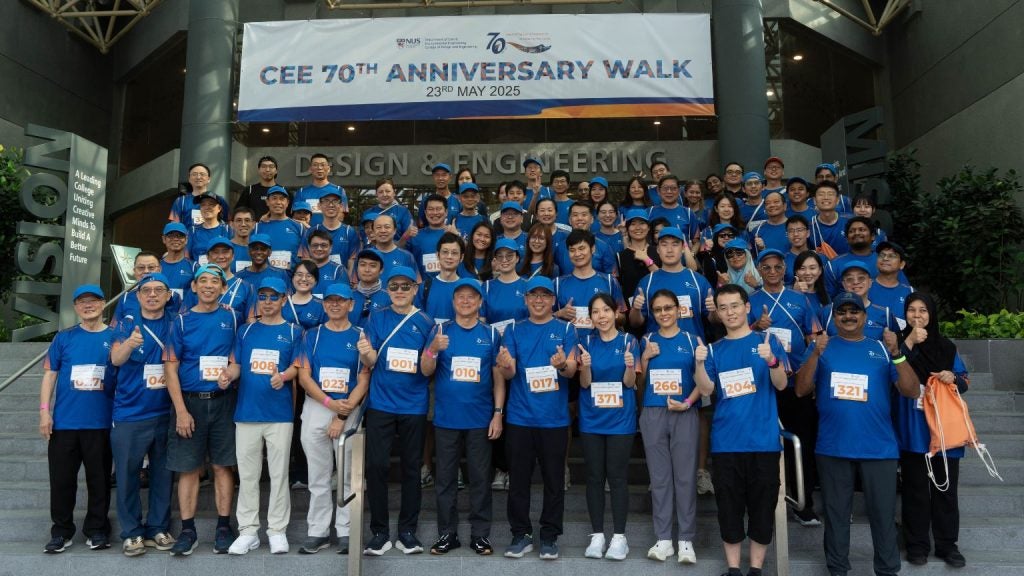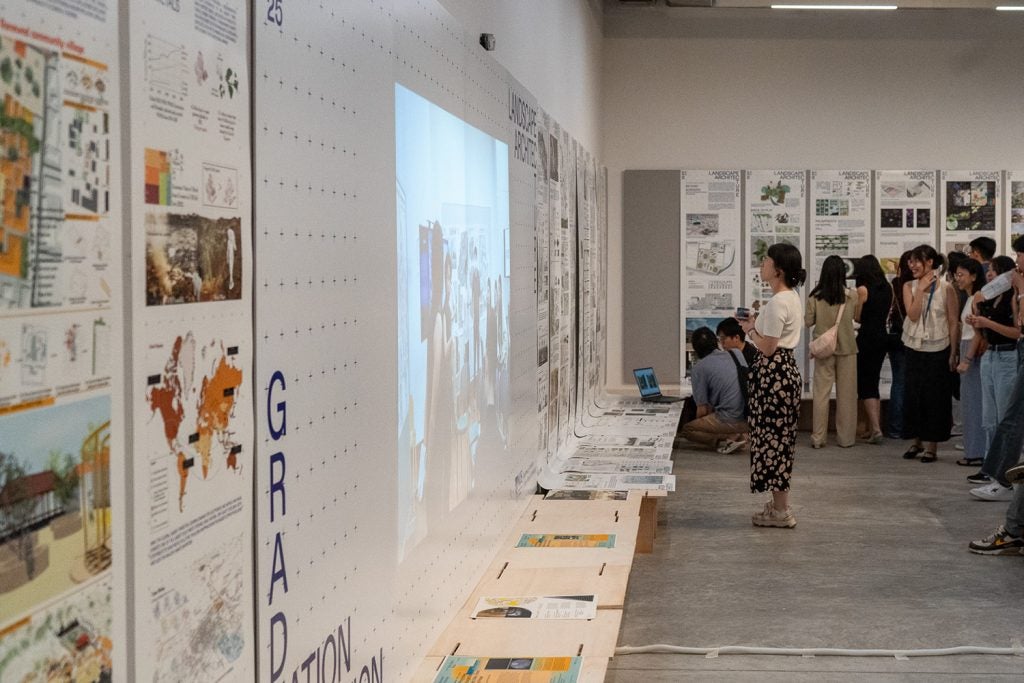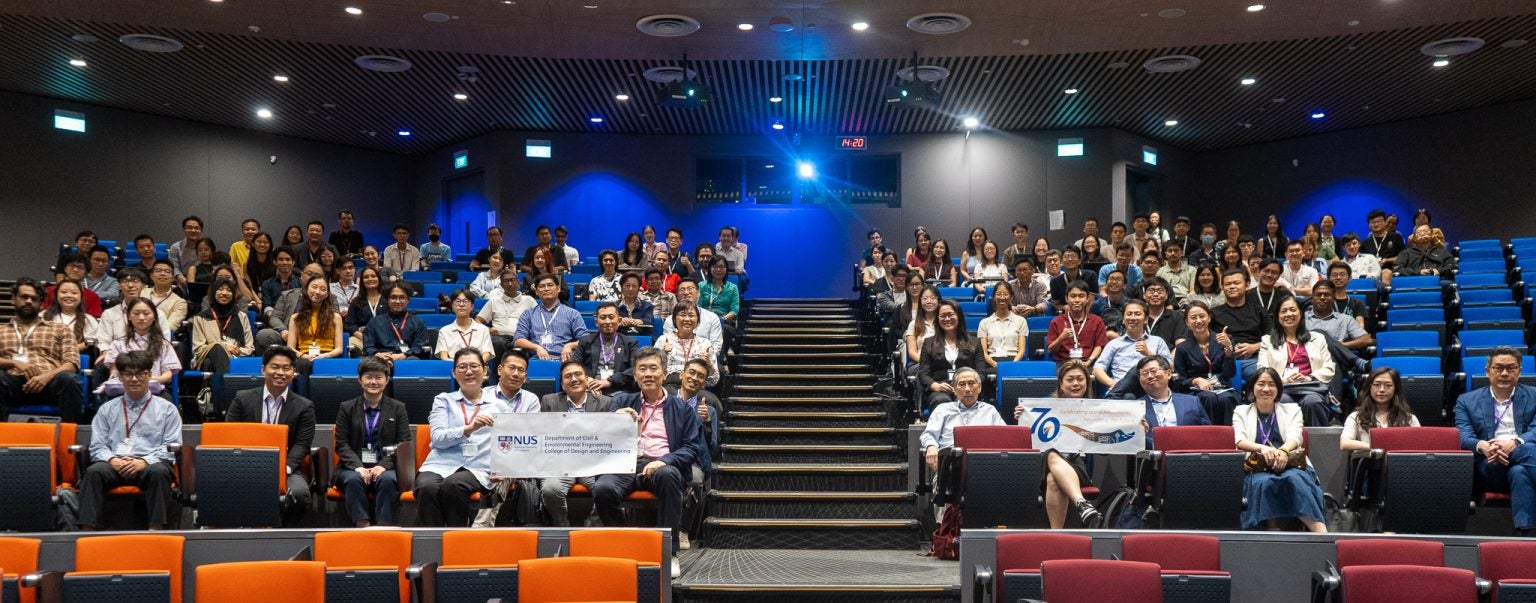
“Through this symposium, we hope to provide a platform for the community to share advances in sustainable development, promote idea exchange among experts from the industry, public sector, faculty, students and alumni, and foster future collaborations.” - Professor Hu Jiangyong, Programme Director for Environmental and Sustainability Engineering (ESE) and Director for the Centre for Water Research.
The Department of Civil and Environmental Engineering (CEE), together with the Centre for Water Research, held the annual Environmental and Sustainability Engineering Symposium on 9 April 2025. The symposium is a platform for graduating BEng Environmental and Sustainability Engineering students to share their final-year projects (FYP) with faculty, fellow students, researchers, alumni and industry members.
The event featured speakers from the environmental and sustainability sector, covering topics such as starting a career in sustainability, innovations in water and waste management, and even a talk on a career in nuclear science.

One of the speakers was Mr Matthias Ong, Co-Founder of The Sustainability Service, a non-profit organisation that works with organisations to create social and environmental impact. Having graduated from the then BEng Environmental Science and Engineering in 2010, Mr Ong has forged a career in both the private and public sectors, tackling environmental and sustainability issues.
Using his journey through the sustainability sector as an example, Mr Ong gave his perspective on the career opportunities available for the upcoming Environmental and Sustainability Engineering programme graduates. “There are a lot of opportunities in the sustainability sector, and the industry is waiting for you”, Mr Ong emphasised.
The 15 final-year projects on display at the EA atrium covered topics in Emerging Pollutants, Sustainable Cities, Waste and Resource Circularity, and Advanced Process and Treatment. Amongst the final-year projects on display are:
Trophodynamics and bioaccumulation of legacy and alternative per- and polyfluoroalkyl substances (PFAS) in tropical coastal margins by Rockson Liu
PFAS are widely distributed in the environment, often referred to as “forever chemicals” as they are extremely resistant to natural breakdown and are used in products such as food containers and clothing. Despite the phased-out use of certain toxic PFAS, alternative compounds continue to emerge, and their impact on the environment, particularly marine biota, remains poorly understood. Through his final-year project, Rockson took a closer look at the fate and transport of these PFAS in Singapore’s marine ecosystems.
The project came as a spin-off from his research during his stint in year 2 with the Undergraduate Research Opportunities Programme (UROP), where he worked with Prof Karina Gin from CEE.
“The experience sparked my interest in emerging pollutants, and my FYP naturally evolved to examine these contaminants at a broader scale. Among them, PFAS stood out as research into the environmental fate and impacts of PFAS lagged significantly behind that of other pollutants. I saw an opportunity to contribute to ongoing surveillance and future remediation efforts in our local ecosystems.”
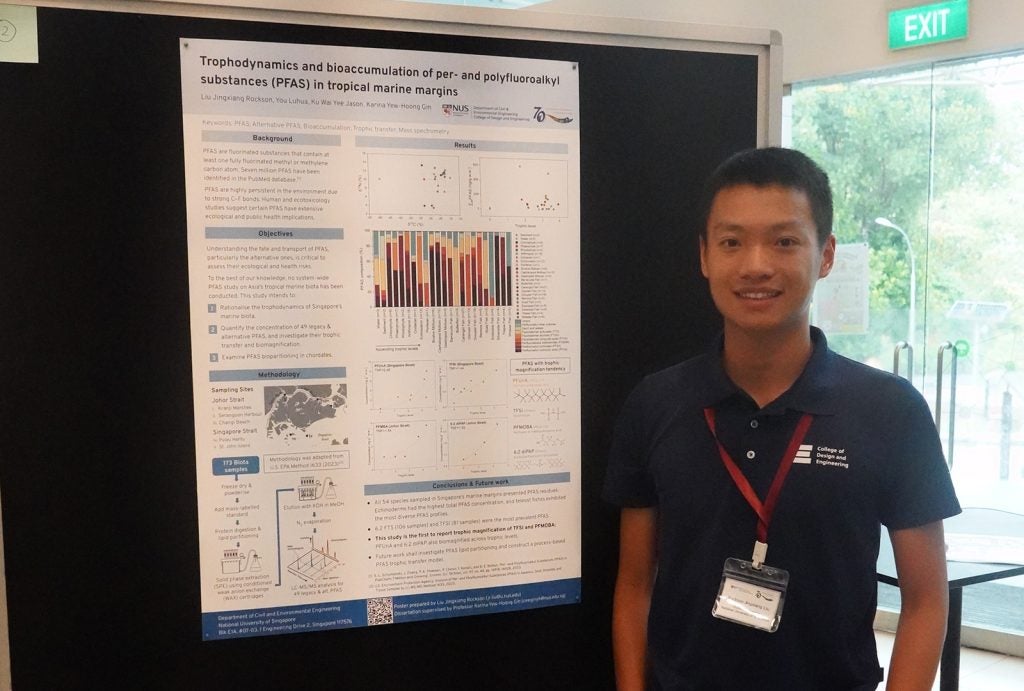
Development of a humidification and dehumidification (HDH) process for desalination by Puah Ming Hui.
While Reverse Osmosis (RO) remains the primary desalination method in Singapore, it faces challenges such as high energy consumption, membrane fouling and scaling. Ming Hui’s innovative HDH system integrates sustainable elements, including waste heat reuse via a return line, to enhance energy efficiency and water recovery. By optimising the system configuration, he aims to maximise performance and demonstrate HDH’s potential as a viable, energy-efficient solution to strengthen Singapore’s long-term water security. Ming Hui developed the project under the supervision of Prof Hu Jiangyong.
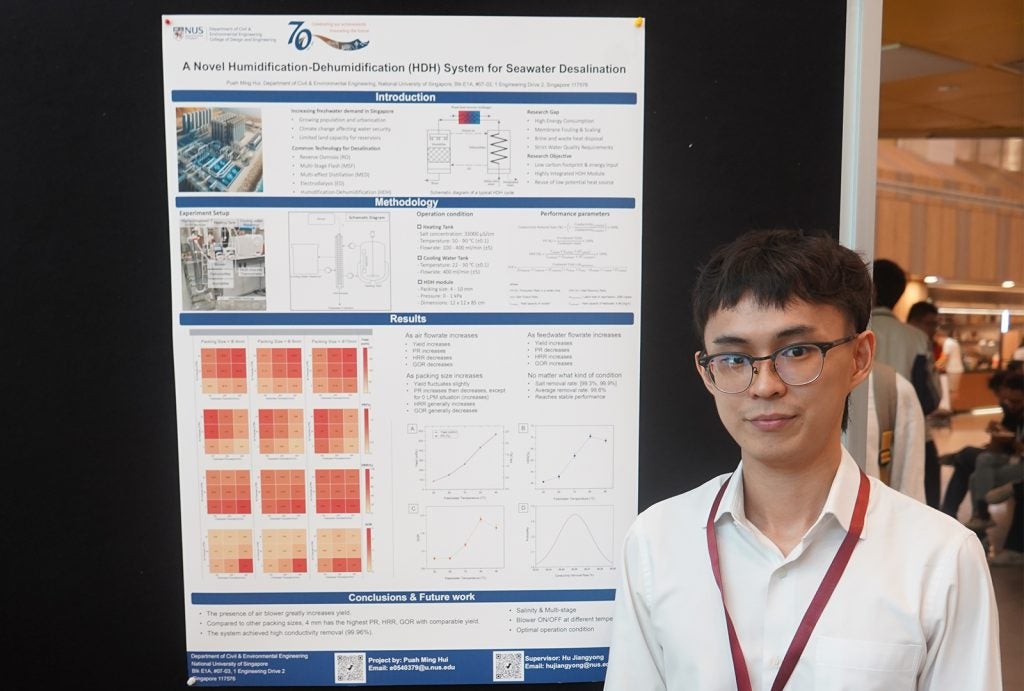
Congratulations to all the final-year ESE undergraduates for completing this academic milestone in your journey in CDE!



